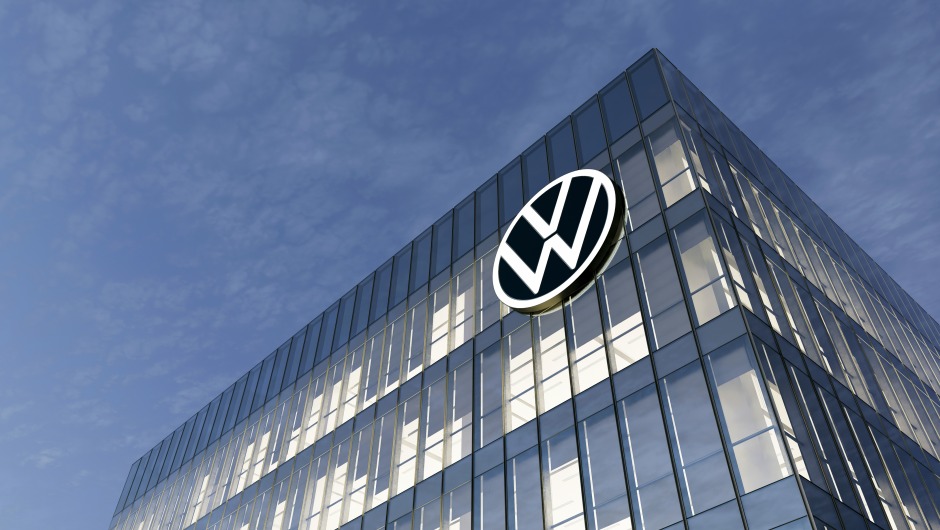American automakers ramp up commodity hedging as they play catch-up to VW, BMW

Ford & General Motors add an additional $466 million of commodity hedges in the third quarter of 2021
Rapidly increasing raw material costs are pushing automobile manufacturers to reinforce their commodity hedging strategies. After looking at European automakers including Volkswagen and BMW’s successful approach to stave off commodity inflation by amassing commodity derivatives in the initial part of the year, their American and Japanese competitors are now escalating their hedging programme as they added an additional $466 million of commodity hedges in the third quarter of 2021.
Chasing German rivals
Germany based automobile behemoths; Volkswagen (VW) and BMW emerged as clear winners in the first quarter of the year after recording gains on their commodity hedges sufficient to fight inflationary headwinds.
Following their lead, the American automobile manufacturers- General Motors (GM) and Ford expanded their hedging portfolios in the third quarter while Tokyo based Honda is planning to initiate hedging to avert growing cost pressures.
The manufacturer of Chevrolet and Cadillac, GM expects a $2.2 billion cost headwind in the financial year 2021/22, half of which has been contributed by commodities. Expecting volumes to rise in the coming quarters further aggravates the situation by contributing to higher product costs as commodity prices continue to sustain at higher levels.
To counter this impact, the company held $1.33 billion of notional commodity hedges at the end of Q3, 21.5% or $235 million higher than the previous quarter, able to cover 1.32% of the company’s cost of goods sold in the third quarter. The notional hedges stood at only $341 million at the start of the year.
“I would expect that more of that inflation is going to hit in Q4 than it did in Q3 just sequentially” said Paul Jacobson, CFO at GM during the Q3 earnings call.
!function(){“use strict”;window.addEventListener(“message”,(function(e){if(void 0!==e.data[“datawrapper-height”]){var t=document.querySelectorAll(“iframe”);for(var a in e.data[“datawrapper-height”])for(var r=0;r<t.length;r++){if(t[r].contentWindow===e.source)t[r].style.height=e.data["datawrapper-height"][a]+"px"}}}))}();
Tokyo based automobile manufacturing conglomerate, Honda, estimates the headwind from commodity inflation to be JPY 260 billion ($2.89 billion) or almost 3% of its total cost of goods sold. Despite the sharp blow, the company didn’t hold any derivatives since the start of the year to lock in the price of future commodity purchases.
However, Honda told EuroFinance that it plans to follow the lead of other auto giants and start commodity hedging for which it will provide details in its 20-F filings with the SEC next year.
On the contrary, Honda’s Japanese competitor, Toyota doesn’t hold any commodity hedges and is solely dependent on its “cost reduction efforts” to stave off the impact of commodity inflation, a spokesperson at Toyota told EuroFinance.
Despite these endeavours, soaring material prices had a JPY30 billion ($265 million) impact in the last six months while the management expects this adverse effect to augment to JPY315 billion ($2.7 billion) billion in the next six months.
“Our revised operating income forecast represents in substance a downward revision due to raw material cost increase” management at Toyota said in Q3 earnings presentation to investors.
Spokesperson at Toyota declined to comment further about the details of the company’s cost reduction efforts.
GM’s American counterpart, Ford held $1.85 billion worth of notional derivatives, 14.3% higher than the last quarter and sufficient to cover 1.54% of cost of goods sold in the third quarter.
Ford expects its negative impact of commodity inflation to be between $3 billion to $3.5 billion for the financial year 2021/22 which could be up another $1.5 billion in 2022, largely driven by steel and aluminium similar to this year.
On a quarter-over-quarter basis, commodity costs are expected to be higher by $700 million while the company reported a realised gain of only $294 million since the start of the year.
!function(){“use strict”;window.addEventListener(“message”,(function(e){if(void 0!==e.data[“datawrapper-height”]){var t=document.querySelectorAll(“iframe”);for(var a in e.data[“datawrapper-height”])for(var r=0;r<t.length;r++){if(t[r].contentWindow===e.source)t[r].style.height=e.data["datawrapper-height"][a]+"px"}}}))}();
Meanwhile, as commodity prices continue to rise, VW’s fair value gain on its commodity hedges further increased to €1.9billion at the end of Q3 from €1.7billion in Q2, partially offsetting the €400 million increase in product cost during the same time period, which the company expects to widen in the last quarter of 2021.
VW’s rival BMW was also able to counter the increase in cost of sales despite the expiry of commodity hedges in the previous quarters.
“In the first nine months of 2021, we have seen a mid-three digit million EUR impact from raw material prices. We have been able to compensate a larger part of the raw material price increases through continuous hedge activities” spokesperson at BMW told EuroFinance.
The company expects further burden by the end of 2021 due to rising prices of previous metals but expects hedging activities to counter the main price increase.
Growing reliance on Pricing
Given the severity of input cost rise since the start of the year, automakers have raised prices to limit the impact on profits by passing the higher cost to the consumer.
GM disclosed in its interim filings that higher pricing contributed 4.2% or $1.5 billion to its sales in the third quarter as compared to last year. While pricing had a $2.38 billion positive impact on Ford’s operating profit during the same time period.
Meanwhile, the manufacturer of Mercedes-Benz and other brands, Daimler which held notional derivatives worth only €228 million at the start of the year, sufficient to cover just 0.2% of its cost of sales, is dependent on pricing to alleviate input cost pressures.
“I’m very pleased with the net pricing development. In the third quarter, it helped us offsetting some of the raw material headwinds and supply chain-driven constrained costs” said Jochen Goetz, CFO at Daimler
On the contrary, facing a unique end-market, Honda and Toyota weren’t able to hike prices of their products, putting them in a tough spot with limited commodity hedging in place.
“For the market fluctuation, higher commodity prices are a large impacting factor. We are not in a situation where we can hand on these price increases to our customers.” said Kenta Kon, CFO at Toyota.